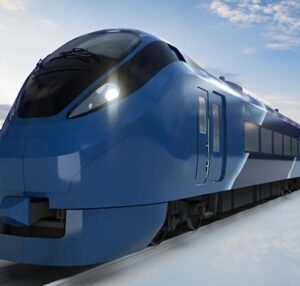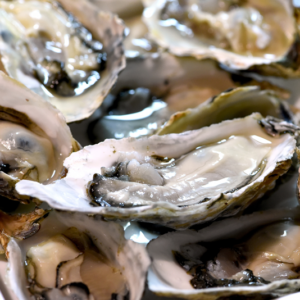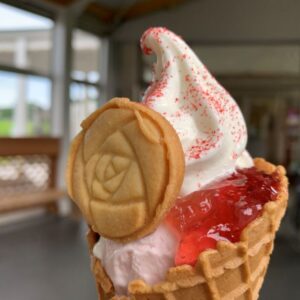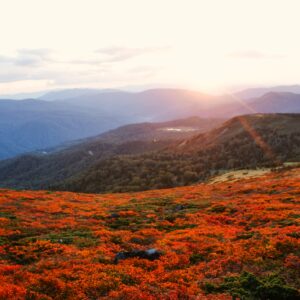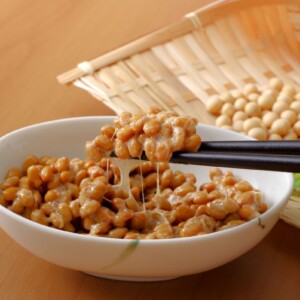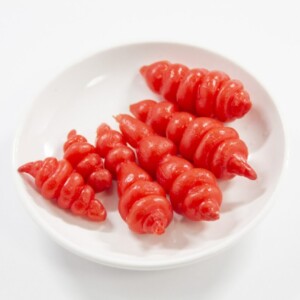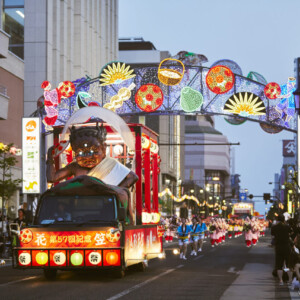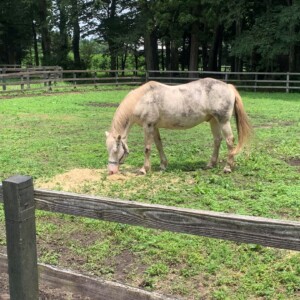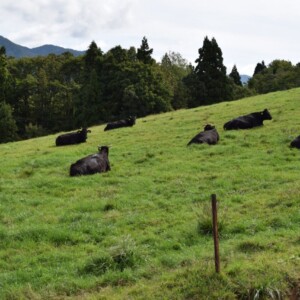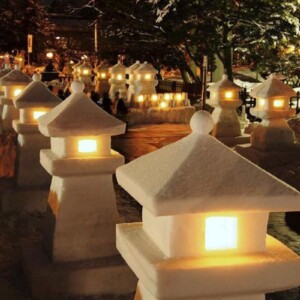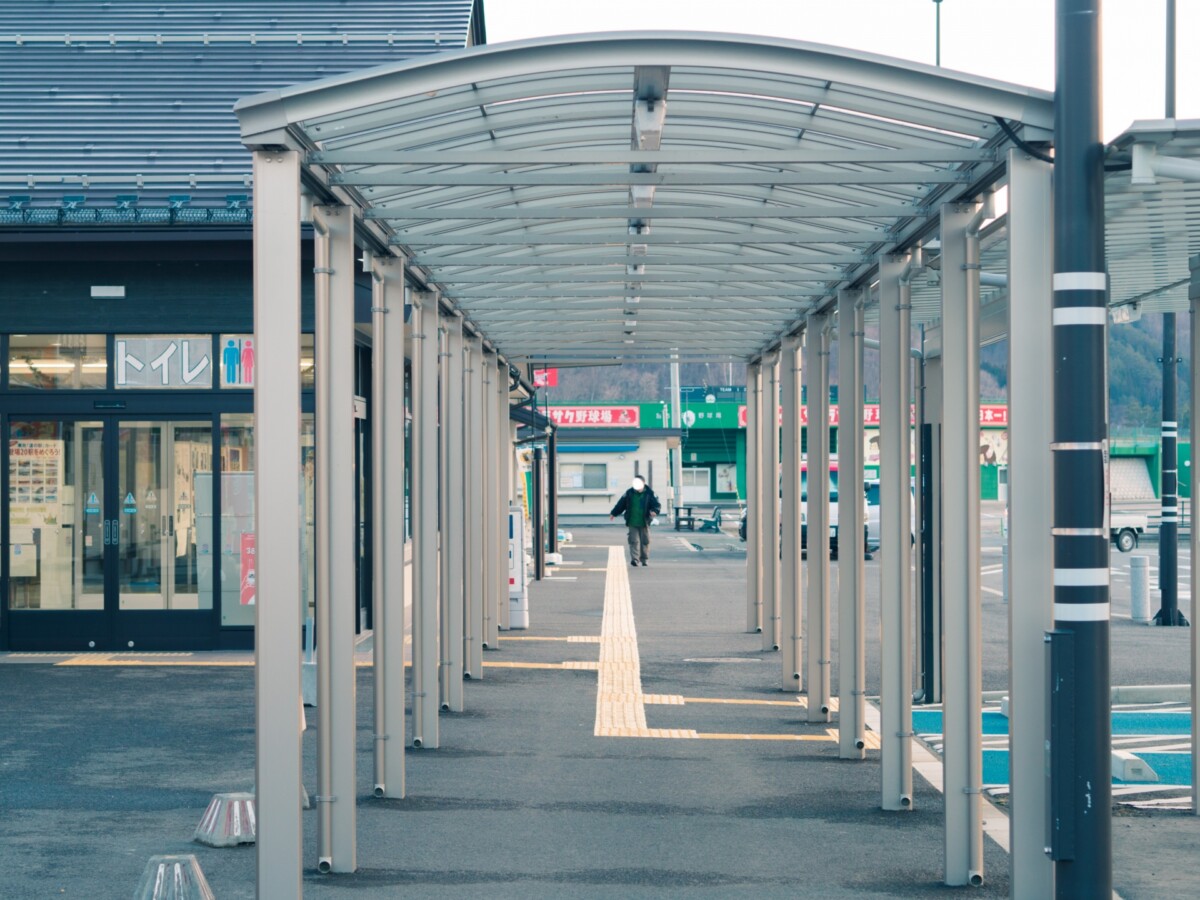
[Miyako City, Iwate Prefecture] Roadside Station Taro Yamase Hill, gateway to the Sanriku Geopark, which is undergoing reconstruction
table of contents
The roadside station in Taro, Miyako City opened in April 1995
At the time, the roadside station was located on high ground north of Taro city, so it was spared from the tsunami damage caused by the Great East Japan Earthquake, and was used as a base for volunteers providing relief in the city
However, with the opening of the Sanriku North Longitudinal Road as a reconstruction road, it was expected that traffic volume on National Route 45 near the road station would decrease, and there were also issues with leasing the land, so it was decided to relocate to the center of town, which had been left vacant by the tsunami
After a temporary opening in July 2016, the new roadside station officially opened on April 7, 2018
What's at Roadside Station Taro?
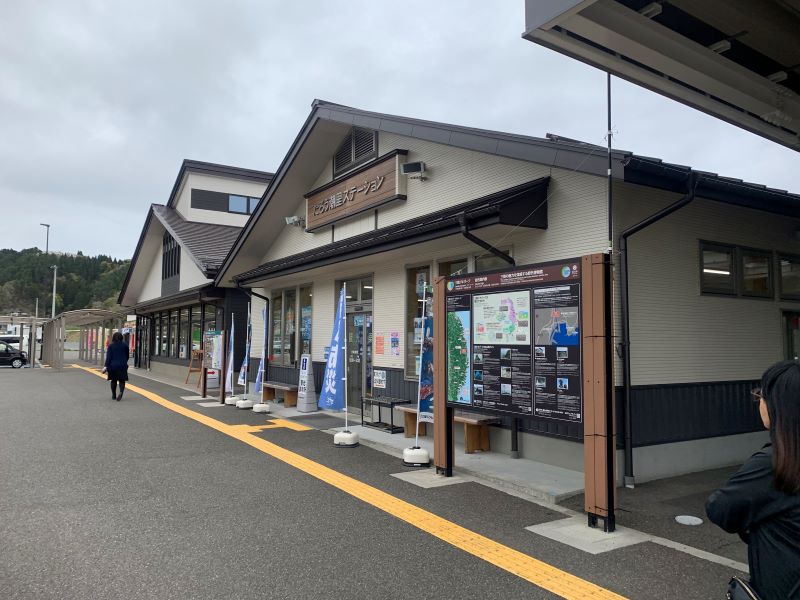
Roadside Station Taro has a large parking lot that can accommodate 62 standard cars, 2 disabled parking spaces, and 12 large vehicles, and the site area is much larger than when it was previously located on high ground.The station also has the following facilities:
Tourist information center "Taro Shiori Station" and road information facility

In addition to functioning as an information center for surrounding tourist destinations such as Sanriku Geopark, the facility also displays disaster prevention information for the Taro area and records of the earthquake
There is also a play area for small children, where you can relax and take a break
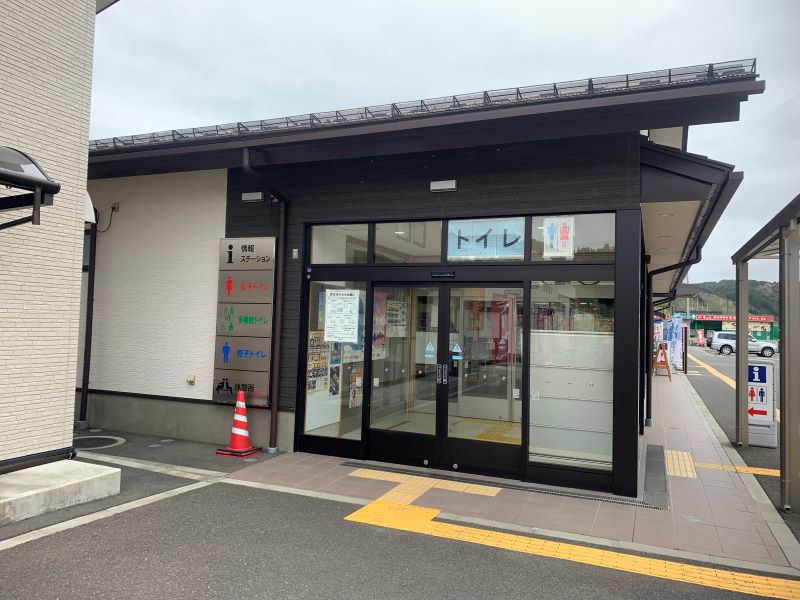
There are new and clean toilets, free Wi-Fi is available at the rest area, and information on surrounding roads such as National Route 45 is on display, as well as a model that recreates the townscape of the Taro area before the earthquake
Taro Direct Sales Association "Toretara"

In addition to seasonal produce from the Taro area, such as wild vegetables and matsutake mushrooms, as well as agricultural products such as tomatoes, eggplants, and apples, and processed seafood, mainly seaweed such as wakame seaweed and kelp, you can also purchase live seafood from the live fish tank

You can also enjoy rice balls and grilled seafood skewers, and there are also crafts and miscellaneous goods available
Yamacho store
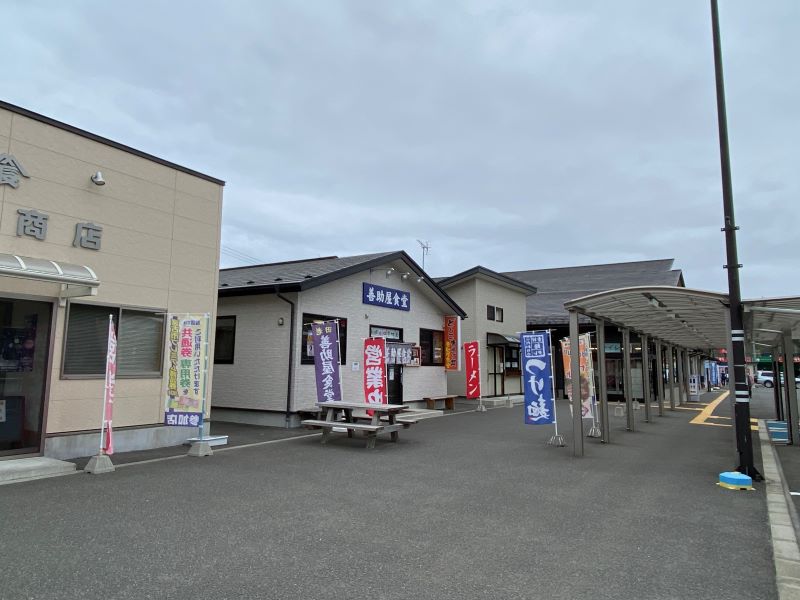
In addition to freshly caught seafood and dried fish, you can also purchase fresh produce such as vegetables and fruits
Matsubaya Mochi Shop
they also sell the local sweet "suttogi (mameshitogi)."
The obanyaki is highly recommended as it is filled with plenty of bean paste
Zensukeya Restaurant
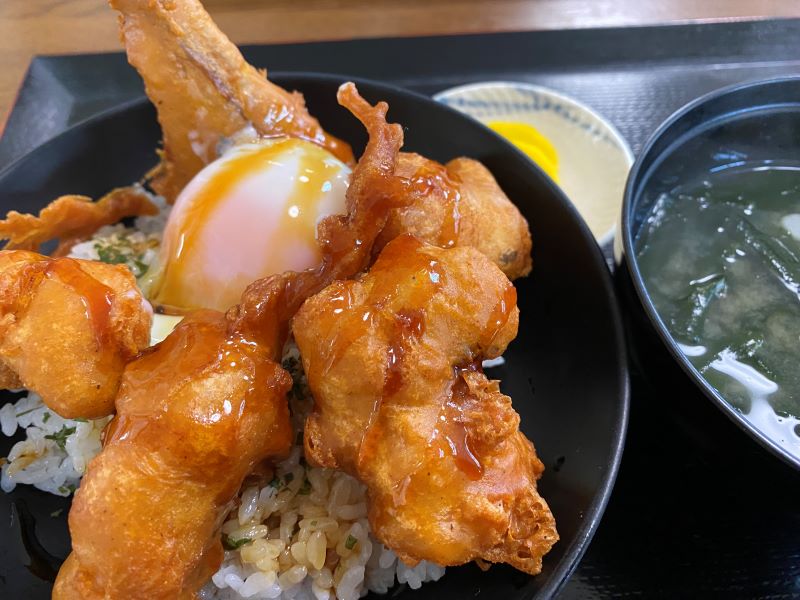
Zensukeya Shokudo's specialty is fried donko popular dishes Donko Karaage Rice Bowl," locally "donko, topped with a soft-boiled egg, and the "Wakame Ramen (soy sauce flavor)," which is topped with plenty of . The Donko Karaage Rice Bowl is also available for takeout at the restaurant and at the direct-from-farm shop "Toretara."
Fast food corner
The coffee and soft serve ice cream (April to November) are delicious, and the mountain of freshly fried french fries are also popular. There is a counter where you can eat standing up, and they also serve light meals such as mekabu soba, udon, kakiage soba, and udon
Yamazaki Daily Store Roadside Station Taro
It is open from 7am to 8pm, so you can conveniently purchase bento boxes, rice balls, sandwiches, and more even early in the morning or late at night
"Kids Park Taro" and dog run "Wantaro"
The kids' park has play equipment such as a grassy hill slide and a ropeway for children to play on
The dog run "Wantaro" is divided into two areas, one for small dogs and one for medium to large dogs, so even small dogs can play safely, and it is free to use 24 hours a day
Taro Baseball Stadium (Kit, Sakurasaku Baseball Stadium)
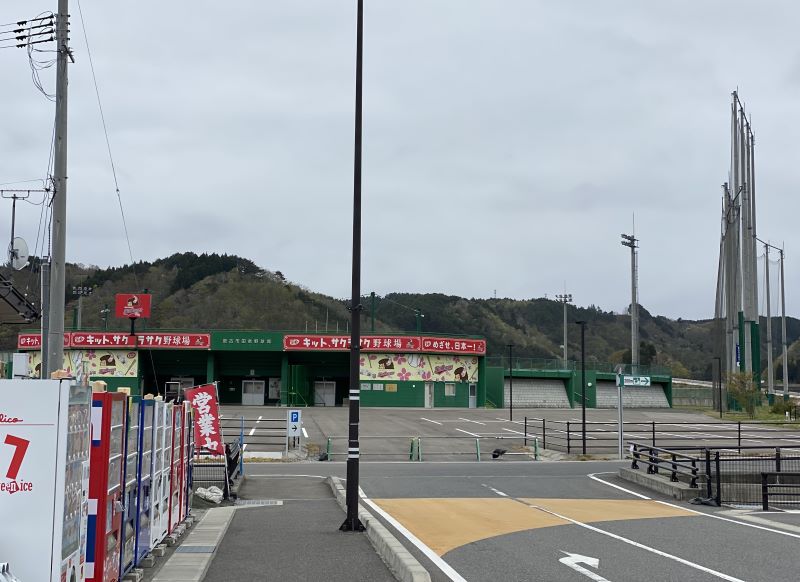
Next to the roadside station on the south side is a baseball field that was located outside the seawall and was completely destroyed by the tsunami, but has been relocated and rebuilt
Nestle Japan "Kitto Zutto Project," , the company acquired the naming rights and named the stadium "Kitto Sakurasaku Baseball Stadium."
the Sanriku Railway Kitto Dreams, an amateur baseball team made up of Sanriku Railway employees and others .
Taro Town and the History of Tsunamis
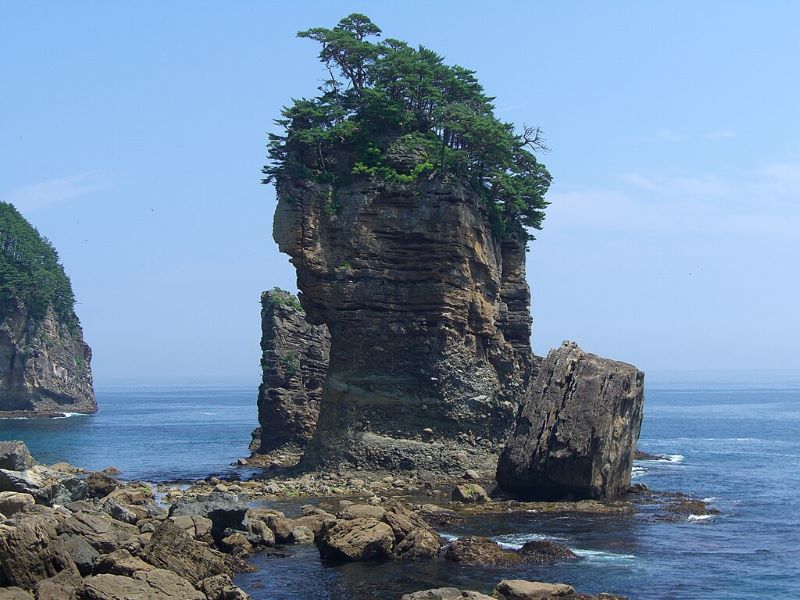
Before the merger to form Miyako City in 2005, Taro Town "Tsunami Taro (Taro)" due to its history of fighting tsunamis.
The village was almost completely destroyed in the Keicho Sanriku earthquake and tsunami of 1611 in the early Edo period, and in the Meiji Sanriku tsunami of 1896 (Meiji 29), all 345 houses in Taro village were washed away, killing 1,867 people, or 83% of the population of 2,248
After the tsunami, the village discussed relocating the low-lying settlement using earthquake relief funds, but the relocation plan was scrapped due to objections from villagers, and the village was rebuilt in its original location
In the 1933 (Showa 8) Sanriku tsunami, 500 out of 559 houses were washed away, leaving 911 people dead or missing, making it the worst-hit village on the Sanriku coast
The gigantic seawall known as the "Great Wall of China"
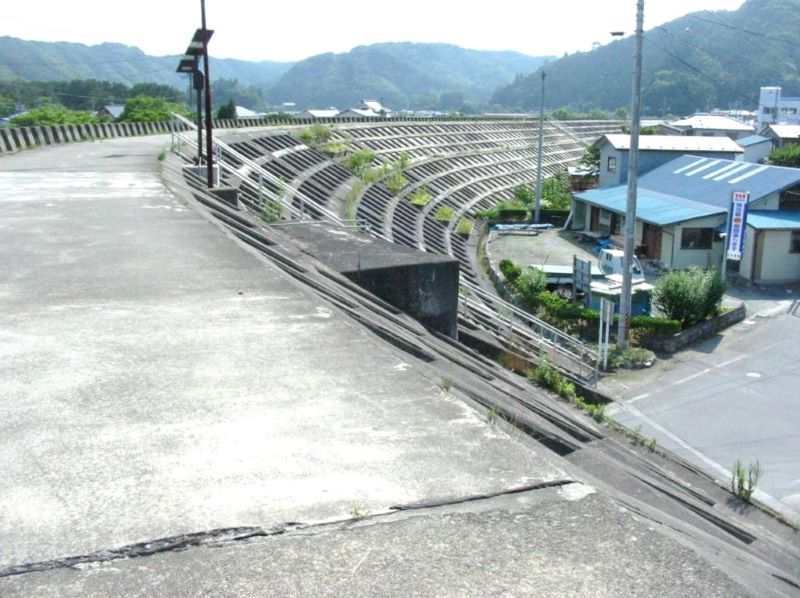
Taro Village does not have high ground to which the entire village could be relocated, so the recovery plan from the tsunami focused on building a seawall
The first construction work was completed in 1958 (Showa 33), and by 1966 (Showa 41), a huge X-shaped seawall, known as the "Great Wall of China," was completed, surrounding the city and measuring 10.45 meters in height and 2,433 meters in total length
The 1960 (Showa 35) Chilean earthquake tsunami was low in height, and although damage was caused along the Sanriku coast, Taro was spared. The media reported that "Taro's seawall was a success," and Taro became known as a disaster prevention town, and the X-shaped seawall became famous
However, in the Great East Japan Earthquake, the tsunami easily overflowed the seawall, leaving nearly 200 people dead or missing in the Taro area
There was testimony that "many people were unable to evacuate in time because they had too much confidence in the impressive seawall," and residents were relocated to higher ground, and the seawall was raised to 14.7 meters, but near the roadside station, which was once part of the city, there are now only a few houses and vacant lots are visible
summary

Taro Roadside Station is a recommended roadside station for families taking a break from driving, as you can let your children or pet dog play in the kids' park and dog run if you are traveling with them
Also, near the roadside station the Taro Tourist Hotel , a relic of the earthquake disaster, where you can learn about the devastation of the tsunami that struck the Taro area through the records on display at the roadside station.
If you are heading to Miyako, why not stop by?
INFORMATION
- Name: Roadside Station Taro
- Address: 2-4-5-1 Taro, Miyako City, Iwate Prefecture
- Phone number: 0193-87-3988
- Hours of operation: 24 hours (road information facilities and toilets)
- Business hours: 9:00-17:00 (Taro Shiosato Station, Taro Direct Sales Association "Toretara") (Fast food 10:00-17:00, Yamazaki Daily 7:00-20:00, Yamacho Shoten 9:00-18:30, Matsubaya Mochiten 9:00-18:00)
- Business hours (Zensukeya Shokudo): 11:30-15:00, 17:30-20:00
- Closed: Some stores are closed during the New Year holidays (Fast food stores: Mondays, Yamacho Shoten and Zensukeya Shokudo: Wednesdays, Matsubaya Mochiten: Tuesdays)
- URL: Miyako City Hall Official Website (Information about Roadside Station Taro)


![[Iwate Prefecture] Enjoy soft serve ice cream from the northern Sanriku coast while experiencing the sea breeze! Why are the soft serve ice cream eaten at roadside stations so delicious? Northern Coast Catch](https://jp.neft.asia/wp-content/uploads/2025/06/facd6f7529760ddd2217ff56092d3eaf-150x150.jpg)
![Sanriku International Art Festival 2024 | An event will be held again this year where local performing arts from the Sanriku region will be gathered together [Aomori/Iwate] Sanriku International Art Festival 2024](https://jp.neft.asia/wp-content/uploads/2024/08/main-150x150.png)
